The dazzlingly pink Lake Nakuru is one of the best places to be if you’ve never been on an African safari before.
Well, not actually in the flamingo-filled lake, as it’s home to dangerous animals like Nile crocodiles and hippos. But in Lake Nakuru National Park, an idyllic safari destination in the heart of Kenya.
It’s convenient, charming, and completely packed with wildlife. Here’s a concise Lake Nakuru safari guide to get you ready for an adventure in this beautiful wilderness.
What Makes Lake Nakuru Special?

Lake Nakuru is the most iconic ‘big-four’ national park in the whole of East Africa. Four of the famous five can be found here in relative abundance – lions, buffalo, rhinos and leopards.
In fact, it’s one of very few East African national parks where most of these famous animals can be seen in one place. Ngorongoro Crater Conservation Area is also home to rhinos but it’s very difficult to see leopards. Parks like the Serengeti and Masai Mara don’t offer rhino encounters (even if they claim to), but a wonderful specialism (the great wildebeest migration).
You can definitely see the big five in private conservancies, especially those on the Laikipia Plateau. However, conservancies are exclusive and expensive, whereas Lake Nakuru National Park is very affordable.
But forget the big five. Lake Nakuru is simply spectacular. Flamingos fill the lake, rhinos drink from the waterside, predators lurk on the plains and you can enjoy a best-of-African-style safari in a single morning.
Lake Nakuru is special because it’s one of very few national parks where a wide variety of big mammals can be encountered in a small space. And for that, it’s absolutely perfect for a first-time safari adventure.
Why Lake Nakuru Isn’t the Best Park in East Africa

Many of East Africa’s wildernesses are unfenced and contiguous, i.e. they border each other. For example in Tanzania, Tarangire borders Ngorongoro which borders the Serengeti, so animals can move freely between different parks.
Lake Nakuru is standalone and fenced. Animals cannot move beyond the national park, nor can migratory mammals swell the park’s population. Flamingos migrate to the park from November to May, but of course they can fly, so they aren’t restricted by fences.
This is a small national park and you can explore most of Lake Nakuru on a single game drive. While that’s great for first impressions of famous animals, the park lacks a little in wilderness feeling, especially because it borders the bustling town of Nakuru.
A small park can’t support huge numbers of wildlife because there simply isn’t enough space or food for too many animals. Lake Nakuru National Park covers 188 square kilometres. Serengeti National Park is 14,750 square kilometres! That’s more than 78 times bigger!
As such, Lake Nakuru is great for a first-time safari. If you’ve never seen wild animals before, this national park can cover a lot in a short time. Safari connoisseurs will probably want to look elsewhere, to wilder parks with greater scale and subtlety.
Planning a Lake Nakuru National Park Safari
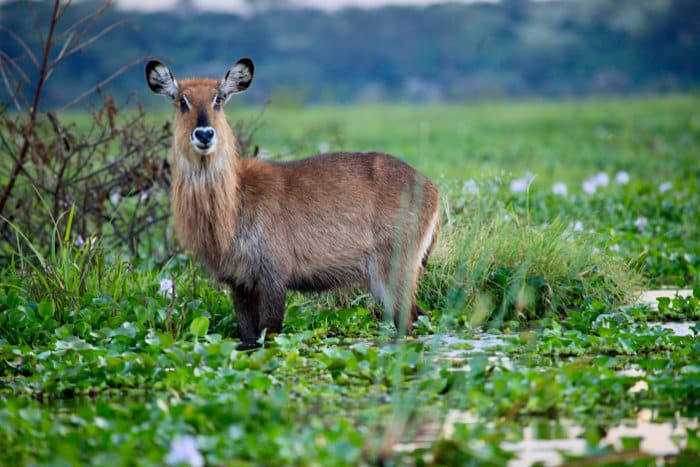
Kenya itinerary planning
With its location in the Central Rift Valley, Lake Nakuru is a convenient inclusion on most Kenya itineraries.
The national park is three hours northwest of Nairobi. Using the same road it’s only two hours from Aberdares National Park and Lake Naivasha.
From Lake Nakuru you can reach the Laikipia Plateau and Mount Kenya within four hour, so it’s easy to combine Central Kenya’s best destinations into a single tour.
Do note that Kenya’s wildest national parks are not in central Kenya. Samburu, Masai Mara and Tsavo are on the country’s outer boundaries. So a Lake Nakuru plus Masai Mara safari will mean either a flight or a 12-hour drive between the parks.
What is the best time of year to visit Lake Nakuru National Park?

Lake Nakuru is a year-round destination. The animals can’t migrate out or in, so the same wildlife population exists throughout the year.
The green season is more beautiful, with lush high grass and flowering escarpments. This is usually April to June and October to December. However, high grass makes it harder to see the cats, who can camouflage themselves away.
Dry season months are not as pretty but generally provide a more complete wildlife viewing experience.
How long to spend in Lake Nakuru
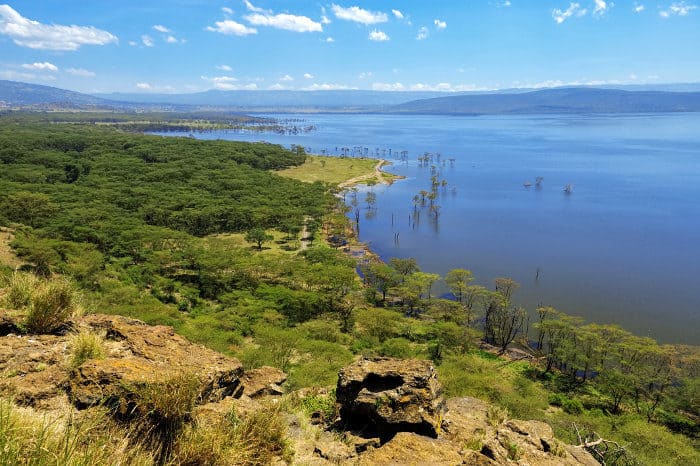
Lake Nakuru may be small but you can’t do a good safari as a day trip, wherever you are traveling from.
The best time for a Lake Nakuru game drive is in the early morning and late afternoon, when the large animals are most active. But with a day trip you will be traveling to Lake Nakuru during these prime hours, so you will be left with a safari during the hottest part of the day.
Many operators offer day trips from Nairobi, or two-day tours combining Naivasha, Hell’s Gate National Park and Lake Nakuru. It’s just too much in too short a time for a good safari experience.
Honestly, don’t attempt a one-day Lake Nakuru tour from Nairobi. If you only have one day for a safari then it’s far more convenient and comfortable to visit Nairobi National Park, where you can enjoy game drive at the best times.
For a proper safari it’s recommended to spend at least one night in the vicinity of Lake Nakuru National Park. Then you can take an afternoon game drive, relax and sleep, then take another game drive the following morning.
Anything longer than two days and one night may be too long. In Lake Nakuru National Park you can only explore on daytime game drives, so if you stay longer you can’t get a different perspective by walking or do a nighttime drive (the only exception is the thrilling Lake Nakuru cycling race every September, which raises money for community conservation).
Where to stay for a Lake Nakuru safari
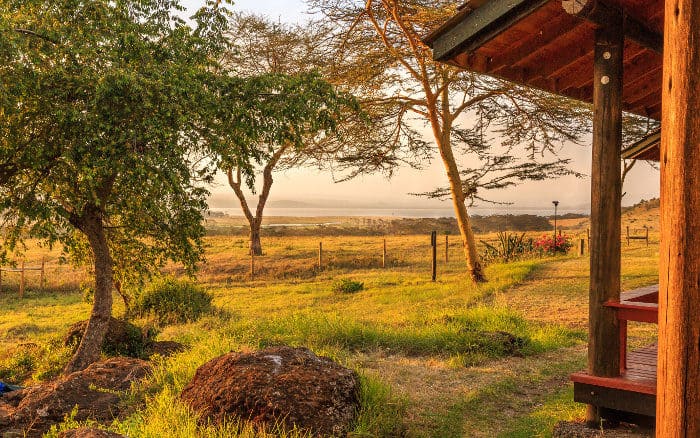
Do you want to stay inside the national park surrounded by animals? Or do you want to stay outside the fence, away from the wildlife?
Staying inside the national park creates a 24 hours a day safari experience, featuring lion roars, baboon calls, and animals grazing past in the night. It’s a real immersion and you can explore at first light, while everyone else is still driving to the park gate.
Of course you want greater animal encounters! But it costs a lot more and it’s almost impossible to find a room inside the national park for less than USD 200. Hotels in Nakuru town can be found for less than USD 30.
When booking an organised tour, make sure you know where you will actually stay. Being deep inside the park is worth the extra money versus a night in a town, away from the wildlife you came to see.
If you really want to connect with your wild side, spend the night at a national park campsite. These campsites only have ablution facilities, so you or your tour operator will need to bring tents, sleeping bags, and everything to cook a meal. Camping fees are currently USD 50 per person for non-Kenyans.
One of Lake Nakuru’s highlights is the abundance of public camping sites. They allow visitors to stay deep inside a national park for a relatively low price. All you need is a sense of adventure, because you will probably hear lions and rhinos in the night!
Don’t worry, it’s very safe. After all, many Kenyan tribes have lived alongside these great animals for millennia. Co-existence is very much possible here!
Safari timings and key wildlife locations in Lake Nakuru
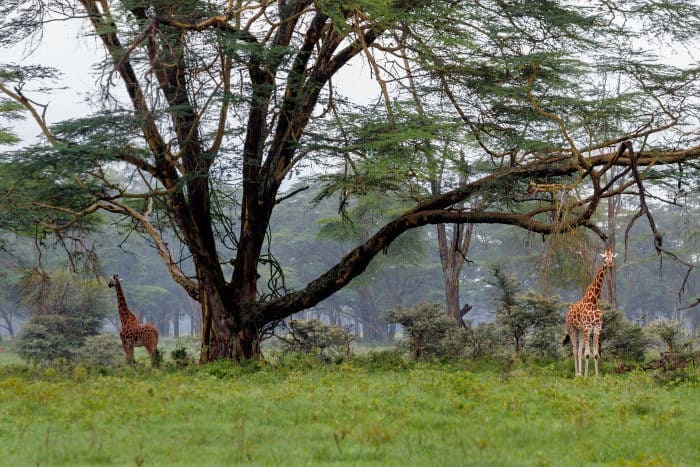
Kenya makes it difficult for people to visit Lake Nakuru without a guide. They impose additional conservation fees for self-driving visitors and for good reason. With so many dangerous animals in a small space, you need to know what you’re doing and where you’re going.
So almost everyone visits on a guided safari tour. The most impressive wildlife tends to congregate around the southern end of the lake shore and the forests beneath Flamingo Hill.
Visit these areas early in the morning as you will have a greater chance of spotting leopards and lions prowling the African savanna.
Early morning is also the best time to encounter black rhinos in the open. From mid-morning onward these bashful giants tend to hide away, inside the forest or in high grass.
White rhinos stay in the open for longer, but nobody wants to be roaming beneath the blazing midday sun, so even buffalo may disappear during the middle of the day.
Choosing the best tour operator for Lake Nakuru National Park
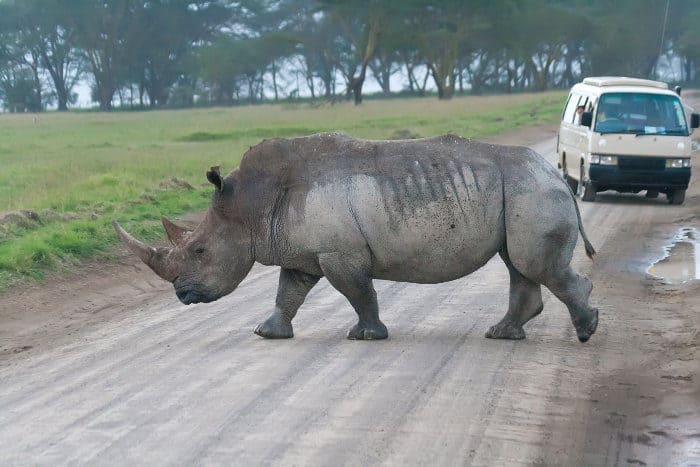
There are hundreds if not thousands of safari tour operators running tours to Lake Nakuru. You can find them online or after you arrive in Kenya.
So how do you know who is good and who to trust?
We believe an African safari should revolve around the wildlife experience, wherever it is in Africa. So when comparing tour operators we recommend asking questions about the wildlife.
Is midday a good time to view wildlife? No, but many tours operate this way.
Where is the best place in Lake Nakuru to see rhinos? We don’t know, but a good local guide can answer this question for you.
Like any tourist industry, Kenya has many outstanding guides and a handful of cowboys. So ask lots of questions about the wildlife experience, rather than focusing on who offers the cheapest tour.
Lake Nakuru can be a stunning safari. It can also be a hot and dreary drive around a landscape where the animals are all hiding from the sun.
It’s in the details you can separate good and average tour operators, so hopefully you will have the safari experience of a lifetime.
If you need assistance Africa Freak has a partnership with a pan-African safari specialist who will connect you to trusted local operators across the continent.
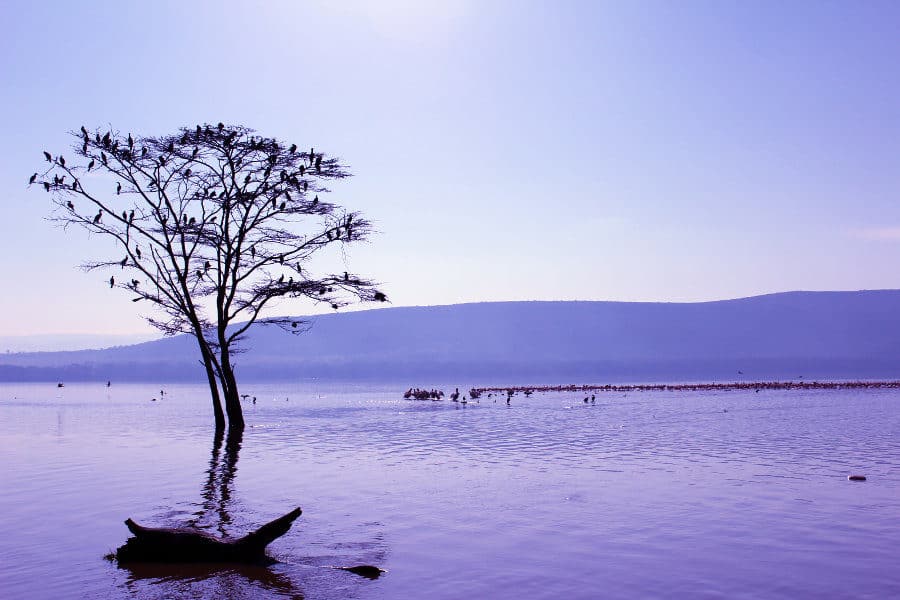


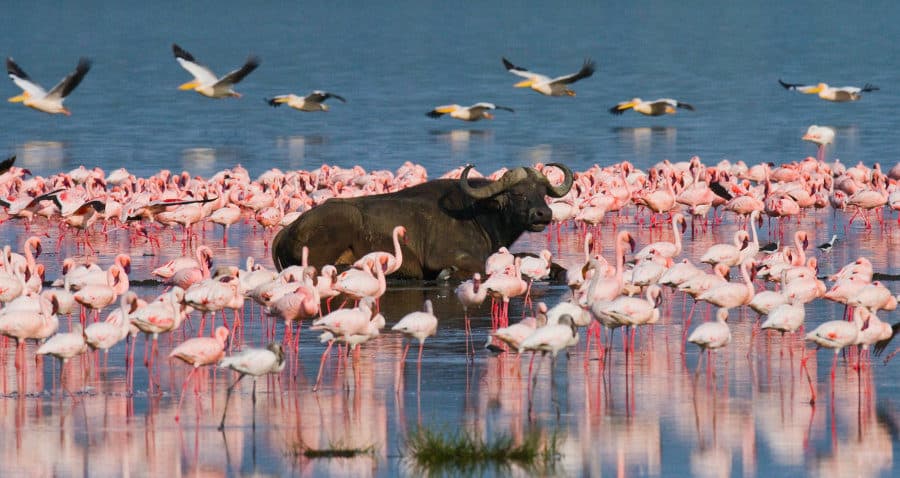
I have visited Nakuru NP for many times but never met the Big Five because of absent elephants (as well as in Nairobi NP). Since when are there settled elephants in this small area?
Thank you so much for pointing that out, Dr. Dengler. Our mistake!
The area is indeed too small to support elephants. Besides, Nakuru is fenced off to protect rhinos and the endangered Rothschild’s giraffe.